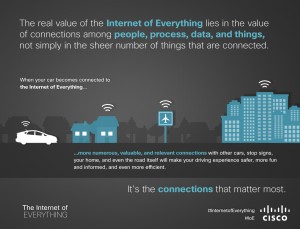Hunger reveals itself in different ways in different corners of the globe:
- In India, where 43 percent of the country’s children are underweight, students line up in their school cafeteria for what may be their only meal of the day.
- In the United Kingdom, people are exchanging vouchers for food at local food banks. Many of them are employed and living in their own homes, but have felt the effects of reduced wages and benefits, often skipping meals in order to feed their children.
- In the United States, those who once donated to the local food banks are now accepting donations for their families – something as seemingly small as a necessary car repair can tip someone into food insecurity.
The scale of the problem is massive, but the organizations aiding those in need are deploying innovative solutions and leveraging technology to help meet the challenge.
Akshaya Patra operates 19 kitchens in Bangalore and throughout India and provides 1.3 million children with one filling, nutritious meal during the school day. For many children, this is their only meal. If Akshaya Patra did not provide it, the children would have to work to earn money to pay for food.
“Weakened by hunger, children are more vulnerable to disease, with tens of thousands dying every year,” says Binali Suhandani, director of resource mobilization, Akshaya Patra Foundation. “Millions more are physically and mentally stunted for life because they don’t get enough to eat in their crucial growing years.”
Akshaya Patra’s program is designed to improve the health of children, and as an incentive to attend school. The latter being a critical step toward breaking the cycle of poverty that leads to hunger.
In the United Kingdom, it’s a different scene, with an estimated 13 million living below the poverty line. The causes are complex, but have been linked to low wages, benefit delays and cuts, as well as rising unemployment (currently 2.9 million people). One in five mothers now reports regularly skipping a meal to feed their children.
According to Tim Partridge, foodbank network manager of the Trussell Trust, the largest foodbank network in the UK, one of the biggest misunderstandings is who hunger affects. The largest client base referred to the Trussell Trust is those who have experienced delays in receiving benefit claims (29 percent last year) or benefit changes (11.47 percent last year). Low income accounted for a further 19 percent of clients.
“Many people referred to us are employed and live in their own homes,” Partridge explains. “The idea that all hungry people are homeless or destitute is clearly inaccurate.”
To increase efficiency and target programs to those who need it most, the Trust utilizes a web-based stock system that allows multiple users access to data on warehouse stock and volume of clients served at locations across the network of 220 operational food banks. The system creates sequentially numbered food vouchers to be exchanged for food. By knowing where the voucher is used, the Trust can get a better sense of where the community needs are and allocate resources to meet them most effectively. The system also produces customized data reports to support funding applications and campaigning for additional resources.
In the U.S., at the Food Bank of Central & Eastern North Carolina, those who once donated have recently found themselves seeking assistance. In the 34 counties the Food Bank covers, more than 560,000 individuals live at or below the poverty line and many more are at risk. Thirty percent of at-risk households have one or more working adults, but an individual’s financial status can change abruptly within as little as 24 hours due to layoffs, onset of major illness or a change in marital status.
The Food Bank of Central & Eastern North Carolina provides five meals for every one dollar donated thanks to efficiencies driven, in part, by technology. The organization is outfitted with IP voice and a robust networking infrastructure that allows them to operate online applications and track them. Additionally, a central network links most of the food bank locations to allow for seamless collaboration and communications.
No matter how hunger materializes around the globe, it remains a very real problem. What is encouraging is how organizations are meeting the need with innovative approaches, and how technology is helping them be as effective as possible.
Ultimately, these organizations believe that hunger is a solvable problem, especially with the right tools and resources in hand. I know Cisco is committed to sharing our expertise, technology, and volunteer and financial support with non-profits addressing hunger in our local communities. We certainly share the same end goal: to address the immediate needs of those suffering, while helping find sustainable solutions that ultimately put an end to global hunger.
Cisco’s annual Global Hunger Relief Campaign, the company’s signature employee giving initiative, is currently underway. Now in its 10th year, the Campaign encourages employee donations to 140 hunger relief agencies and raises awareness among Cisco’s 66,000-strong global workforce of the severity of global hunger. You can help too by telling us how you give on Facebook. Cisco will donate four meals to the World Food Programme for every comment.


 Just like we did last
Just like we did last
CONNECT WITH US